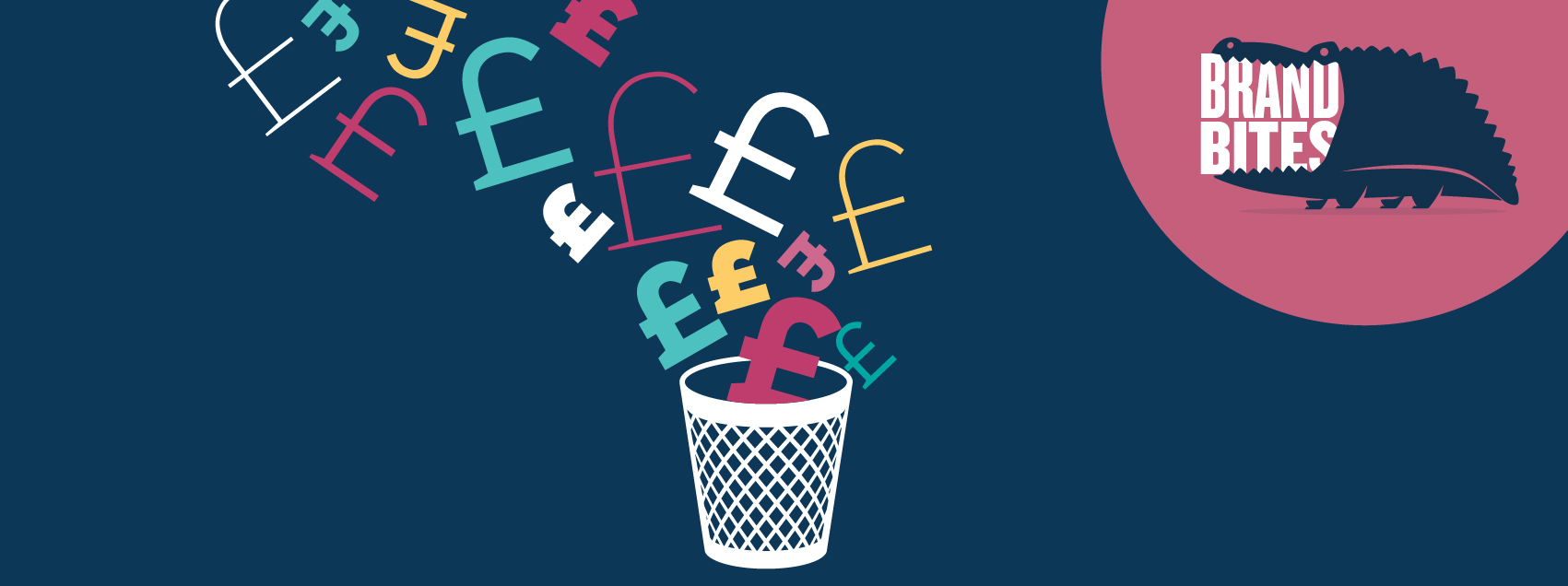
Could your brand be costing you money?
20 November 2019
That’s a question we often ponder when we’re assessing a prospect’s brand. If their brand’s design and messaging is pointing in the wrong direction – even by a relatively small margin – they could be attracting the wrong type of customers, or even worse, turning them away altogether.
But before I dive deeper into that issue, I would like to introduce you to our Brand Bites series of articles – of which this is the first. Through this series, I aim to give you some insight into how branding should be helping (and certainly not hindering) your business growth and provide a set of thought-provoking questions to ask of yourself and your brand.
Costing me how?
Right, back to the question I posed in the headline. There are many reasons why your brand may be off-point and costing you money. Here are a few of the common causes we tend to come across:
- A brand design was never established at the start. Some start-ups grow quickly, often due to the value of the offering or the charisma of the CEO, and perhaps investing in brand design was not a priority at that early stage.
- The business has changed. It’s not unusual for a company to change direction or philosophy, especially in the early days, when it’s finding its place in the market. A classic symptom we often see is a brand that doesn’t communicate what the business is doing now, but what it was doing five years ago.
- The positioning has shifted. A brand’s main purpose is to connect a business with its ideal customers. If you are now targeting a different client profile and your brand is not reflecting this, you will be losing out on sales.
- The brand is looking tired. Sometimes the business owner is, frankly, fed up with sight of their brand. Sometimes even embarrassed by it! It’s so important that your brand gives you confidence when selling to potential clients. If you are faced with this situation then swift remedial work is needed.
On a positive note, many of these causes are common side-effects of a healthily growing business. If you can get the branding back on-track, you could unlock even more of the business’s potential by attracting better quality customers in higher numbers.
Have a think… Do any of the above statements ring true with your business? If so, you really must assess the situation and start to work out what remedy is required.
What’s the problem?
Here are some questions to ask about your brand:
- Does it clearly convey what the business does? A classic gremlin. It’s simply not obvious what you do and who you do it for.
- Does it clearly convey what your business does better? Does it communicate to your prospects why they should be using you and not a competitor?
- Is it consistently applied? Brands with consistent branding expect to earn 23% more annual revenue than the brands that are inconsistent1. Visual style of your website, for example, entirely different to that of your social media?
- Is your brand’s language flawed? For example, does it focus on cost instead of benefits, or “how” instead of “why”.
- Is your brand’s tone-of-voice off target? Is the brand speaking to a hip, millennial audience when your customers tend to be middle-aged office workers?
- Is the visual style resonating with the audience? Your brand’s visual style needs to strike the right chord with your target client persona. If it doesn’t, you can be sure a competitor’s will. Since this is a bit more tricky to assess by yourself – involve colleagues, clients and other trusted third parties in your examination.
- Is your competition’s brand looking much smarter? Keeping up with the Jones’s isn’t good enough – you need to out-smart them! If your brand is lagging behind and most other factors are equal, then you’ll really be losing out on those ideal customers.
- Is your logo as good as it could be? Time and again, your logo has to single-handedly speak up for your business. And given that it takes anywhere from 5 to 7 impressions for consumers to recognise a logo2, it can’t be letting the side down. If it’s looking a bit out-of-date or the strapline is not working hard enough, be prepared to fix it.
Now what?
Becoming aware of the problem is the first step. The next step is to work out the best treatment. But whatever you do, don’t not try and make these assessments on your own. You’re unlikely to be aware of your biases and assumptions, so it’s vital that you get input from trusted colleagues or associates, inside and outside of your business, and ideally from outside of your sector too.
Carry out an analysis of your competitor’s brands to find out what else is happening in your sector, what your competition is doing well and what you could be doing better.
If you’ve found some issues, bring in a brand design agency (apologies for the shameless plug!) to work out the best treatment and advise you of the best steps to turn your brand design into a highly-functioning extension of your sales team.
Sources
- https://www.lucidpress.com/blog/25-branding-stats-facts
- https://www.pammarketingnut.com/2014/05/personal-branding-strategy-social-media-marketing-white-paper/
